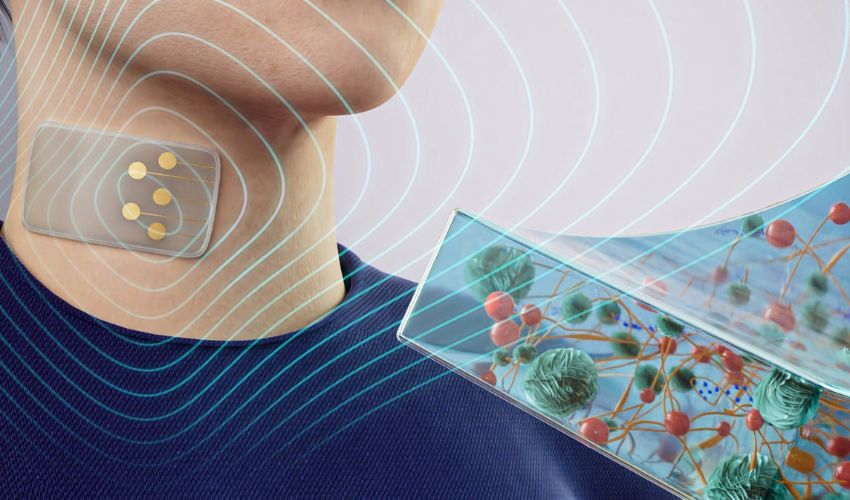3D Printed Electronic Skin Could Open the Way for Human-Machine Interaction

The skin is the largest human organ and the largest sensory connection to the rest of the world due to its more than 1,000 nerve endings. This makes it not just incredibly important to humans as they interact with their environments, but also very difficult to replicate, including through 3D printing. However, that may no longer be the case. Researchers at Texas A&M University have developed a 3D printed electronic skin, or e-skin, which they claim can flex, stretch and sense like human skin. The best part? They hope it could be the first step in future human-machine interaction.
Though it may sound like science fiction, calling on endless films and books talking about androids that are indistinguishable from human or life-changing bionic surgeries, this 3D printed electronic skin is undoubtedly reality thanks to the use of hydrogels and 3D printing. Not only that, but it could be very important for a number of applications, including for individuals with disabilities.
Dr. Akhilesh Gaharwar, professor and director of research for Texas A&M’s Department of Biomedical Engineering, explains, “The ability to replicate the sense of touch and integrate it into various technologies opens up new possibilities for human-machine interaction and advanced sensory experiences.” He continues, “The inspiration behind developing E-skin is rooted in the desire to create more advanced and versatile interfaces between technology, the human body and the environment. The most exciting aspect of this research is its potential applications in robotics, prosthetics, wearable technology, sports and fitness, security systems and entertainment devices.”
In the press release, the researchers confirm that this could include wearable health devices that could continually monitor vital signs as well as give feedback to users and help them to improve motor skills and coordination.

This breakthrough is expected to impact many industries, including wearable electronics, such as the smartwatches seen here. Thanks to this 3D printed electronic skin, vital signs will be even more accurate
Making the 3D Printed Electronic Skin
But what exactly makes this skin special? Well, for one, it has significantly improved upon previous projects when it comes to stiffness. The researchers accomplished this by using 3D printing and bioengineered hydrogels that are able to exhibit tunable electronic and thermal biosensing capabilities. Thus allowing them to create an e-skin that is as flexible as human skin, contains bioelectrical sensing capabilities and can be made with fabrication techniques suitable for wearable or implantable devices.
To overcome issues with stiffness specifically, the researchers used the hydrogels’ ability to decrease viscosity under shear stress during the 3D printed electronic skin creation, making it easier to handle and manipulate. This then eased construction of 2D and 3D electronic structures, allowing them to better replicate the nature of human skins, according to the press release from Texas A&M. Although, the team does not go into detail about what 3D printing technology is used, but it is probably extrusion given that that has been used in similar projects in the past.
Furthermore, they also used a material with imperfections in the atomic structure as this allowed for high electrical conductivity as well as nanoparticles to help the E-skin stick to wet tissue. The nanoparticles in particular react with the hydrogel in a way to imparts electrical and thermal conductivity to the 3D printed electrical skin. Dr. Shounak Roy, a former Fulbright Nehru doctoral fellow in Gaharwar’s Lab and one of the paper’s lead authors along with Dr. Kaivalya Deo, concludes:
We are the first to report using [nanoparticles] as the key component. The material’s ability for adhesion to wet tissues is particularly crucial for potential healthcare applications where the E-skin needs to conform and adhere to dynamic, moist biological surfaces.”
You can learn more in Texas A&M’s press release HERE. What do you think of this 3D printed electric skin? What do you think are the most applications for it? Let us know in a comment below or on our LinkedIn, Facebook, and Twitter pages! Don’t forget to sign up for our free weekly newsletter here, the latest 3D printing news straight to your inbox! You can also find all our videos on our YouTube channel.
*Cover Photo Credits: INMYWORK Studio






